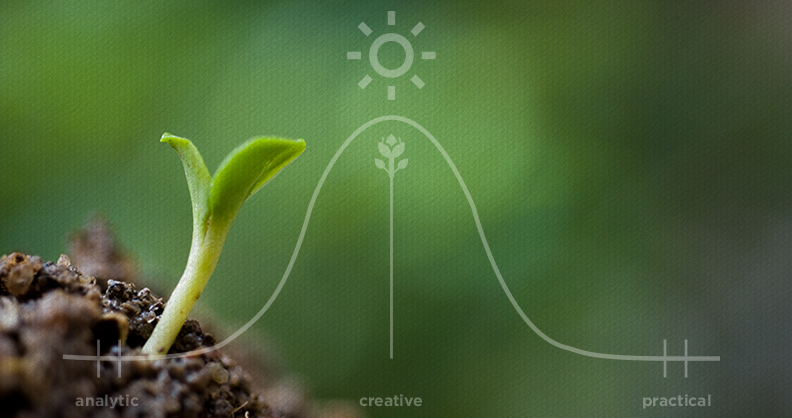Photo + Synthesis

In his book Art of Thought, Graham Wallas (1926) presents one of the first models of the creative process. Wallas explains the creative process in five stages:
- preparation (brainstorming): preparatory work that focuses the individual’s mind on the idea and explores it’s dimensions
- incubation (deep-thinking): a point where an idea is internalized “into the unconscious mind”
- intimation (the spark): the creative person gets a “feeling” that a solution is on its way
- illumination (birth) where the creative person is now consciously aware that an idea is now formed verification (witness) where the idea is consciously verified, elaborated and applied
*items above in parenthesis are my shorthand for Graham’s early 1900s speak which can get pretty heady.
Robert Sternberg, PhD (holding degrees from both Yale and Stanford), proposes a theory of intelligence that correlates with this earlier theory by Graham. He identifies three personalities: practical, analytic and creative in his Triarchic Theory of Intelligence (1997). Of interest, Sternberg splits his creative intelligence into two parts: novelty and automation.
He explains that people who have the ability to manage novel situations can take tasks and find new and interesting ways of solving them. In contrast, automated thinkers are creative, but use routine processes to draft un-stimulating concepts which, in the end, garner very little attention.
Applying information from both of these theories allows you to slowly synthesize a creative process which assists clients in growing their ideas. Your initial idea may be deemed simple, but with professional attention (knowledge) and sunlight (energy) it has the potential to grow into an amazing product or service.
The germination of an idea:
Phase 1: Brainstorm
Someone with an idea for a book, painting or company discusses it out loud to flush out concepts. At the end of this process, written concepts and/or drawings are produced. For example, your company has a sketched logo, possible slogans, the rough draft of a mission statement and business plan. (Graham’s preparation and incubation)
Phase 2: Create
Artists take all the notes, developed during brainstorming, and begins to “mock up” or create everything discussed. This creative team of professionals modifies a sketched logo on a napkin and turns it into a precise image conveying the strength of a companies product. A newsletter or even a website can be born during this stage. The idea is now out of your head and “in the world.” (Graham’s intimation, illumination)
Phase 3: Market
Now it is time to nurture the idea. Fortunately, during this age of prevalent social media, that is easier than ever. Yet, just as skills are needed for a successful garden, so are they here if you wish your garden to grow.
You have brainstormed terrific ideas and created beautiful marketing tools, such as a business card and even a website. Yet, relying on old and stale (automated) marketing techniques will likely bring you reduced exposure. Instead, the assistance of innovative networking professionals creating novel ideas will likely draw the most “eyes” to your product. (Graham’s verification)
[enkode]Talk to us[/enkode] about your ideas on the creative process.
